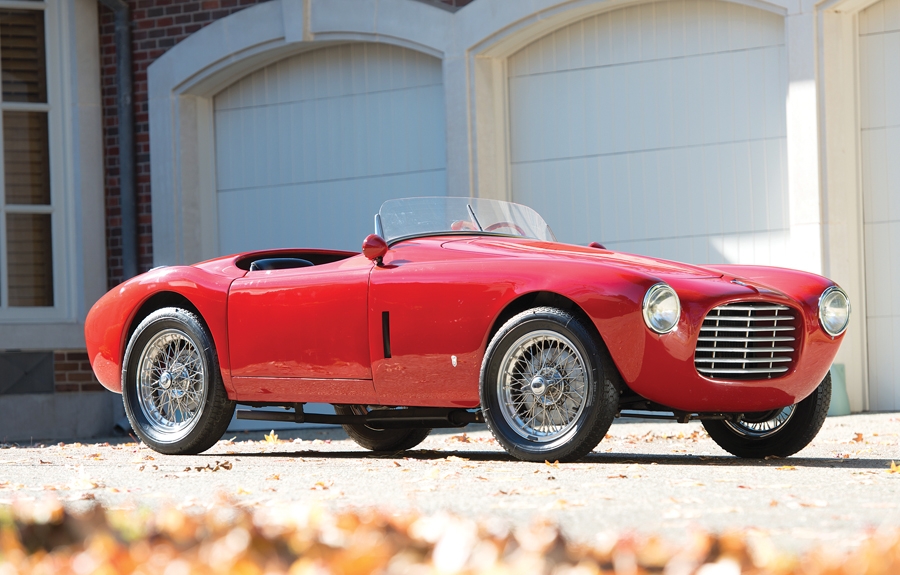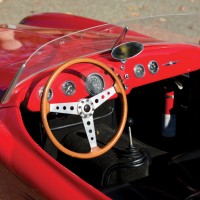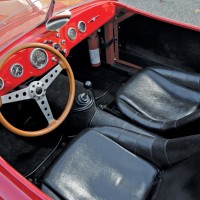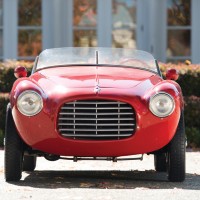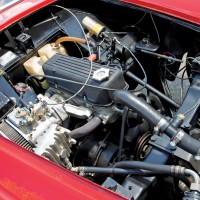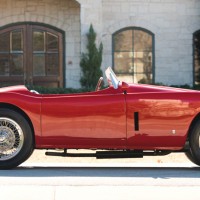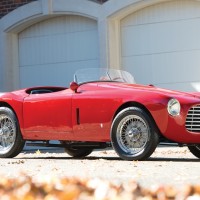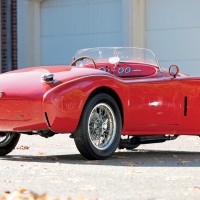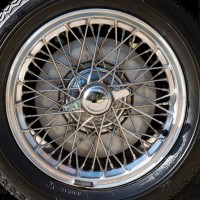SCM Analysis
Detailing
| Vehicle: | 1953 Siata 300BC barchetta |
| Years Produced: | 1949–52 |
| Number Produced: | 60 |
| Original List Price: | N/A |
| SCM Valuation: | $89,000–$185,000 |
| Tune Up Cost: | $250 |
| Chassis Number Location: | Stamped on firewall |
| Engine Number Location: | On block, on distributor side |
| Alternatives: | 1947–56 Stanguellini 1100, 1948–56 OSCA MT4 1100, 1954–56 Moretti 750 GS |
| Investment Grade: | C |
This car, Lot 131, sold for $258,500, including buyer’s premium, at RM Sotheby’s auction in Amelia Island, FL, on March 14, 2015.
From its founding in the 1920s, Siata rose through the ranks of Fiat tuners to become one of the most successful manufacturers of sports racing cars in the 1950s, building well-engineered and superbly balanced machines that regularly won in the hands of gifted amateurs and brilliant professionals alike.
That the cars, especially the small 300BC and the bigger V8-powered 308S roadsters, were also quite beautiful was an added bonus.
Few know of the range of the work of the preternaturally gifted Mario Revelli di Beaumont, but it is wonderful to see him begin to get the recognition he so richly deserves. The 300BC is truly one of his masterpieces, as it is notoriously difficult to execute great design on very small cars.
A little bit of comfort
A challenge with vehicles such as this Siata is to avoid the strong temptation to make them more luxurious in restoration than they were in original build. Where bare metal or rubber mats once sufficed, expensive contrast-color bound edge wool carpets or sumptuously quilted leather panels can often be found.
Of course, for use in vintage rally events, the ruthless imperative of weight saving needed for circuit racing by 20-something drivers seems trivial. Today, to reduce the drumming racket of an empty metal shell, anything that makes the days spent in the cockpit during a vintage rally or even a 20-minute racing session far more palatable is welcome to those of us now in our 60s.
Our subject car was restored by the late Jarl de Boer, who was a Siata marque expert, which speaks greatly in its favor. The concessions to civility were kept at a minimum, with plain carpeting and only slightly luxuriously padded bucket seats.
Both engines are suitable
Ideas on period faithfulness have evolved since this car was done in the 1980s. It’s also worth noting that it was quite common during the 1950s and 1960s to change the engines on these cars — depending on the owner’s event needs, pocketbook and driving style/talent.
Many preferred the character of the monoblock Crosley engines — not to mention the greater availability and lower cost of performance parts compared with the Fiat 1100 units.
It’s worth noting that the SCM Pocket Price Guide counsels a deduction in value for the Fiat 1100 in place of the Crosley. The catalog description speculates on which of the two engines, one Fiat, one Crosley, that came with the car may have been the original.
The likelihood that the 1100 Fiat engine in the car was installed when it left the factory in 1953 seems slight — and the same goes for the Crosley engine. In today’s restoration practice, it is much less likely that a perfectly correct replacement engine would be stamped with a “matching” number. In the absence of confirming records, it’s also not that important. Either engine is correct for the car, so there is no need to make apologies for either one.
History and provenance
It’s high time that buyers of competition cars that are 50 years old or older worry less about matching numbers. Their focus should be solidly on being true to the history and provenance of the car now in their care.
Competition cars tell their own story through the modifications they endured to survive — and possibly to win. Those developments and changes should be celebrated, not obscured in some misguided desire to be genuine in an inauthentic way. It’s long been the way in the vintage Bugatti and Bentley world, and it would be a welcome development to see this trend spread, especially among certain Italian and German marques.
Sort before driving
The catalog copy mentioned that the car had “remained relatively unused” in the past three decades and described some recent re-commissioning work which had been carried out to prepare it for the sale. Something that I frequently discuss with clients, both on the selling and buying side, is the indisputable fact that when someone makes the decision to sell a car, it’s most likely because it’s no longer used.
The first thing all of us want to do, of course, is use a car we’ve just bought. Small wonder that often the first days or weeks of ownership are marked with unpleasant surprises. While this car certainly looked smart, despite the 30 years that had passed since its restoration, a hint of this reality reared its head on the auction block itself. While it was driving in to be sold, a smoldering electrical fire erupted under the hood. Damage was slight, and the car went on to be hammered sold at a quite respectable number.
Siatas on the rise
As a measure of the car’s usability and fun-to-drive factor — and the vastly increased interest in small-bore sports cars in the market — the price realized for this car would have bought an 8V Siata about 12 years ago. It must also be noted, however, that one of these cars, chassis ST421BC, fitted with a Crosley engine, was a no-sale at $117,000 bid during Bonhams Gstaad sale in December 2007 (SCM# 48124) against a $160k–$200k estimate.
I love these cars, and my only complaint about this sale is that it was far more than I could afford to pay for a car like this one. I hope the new owner gets it fully sorted and drives it as often as possible for the next 30 years. ♦
(Introductory description courtesy of RM Sotheby’s.)
